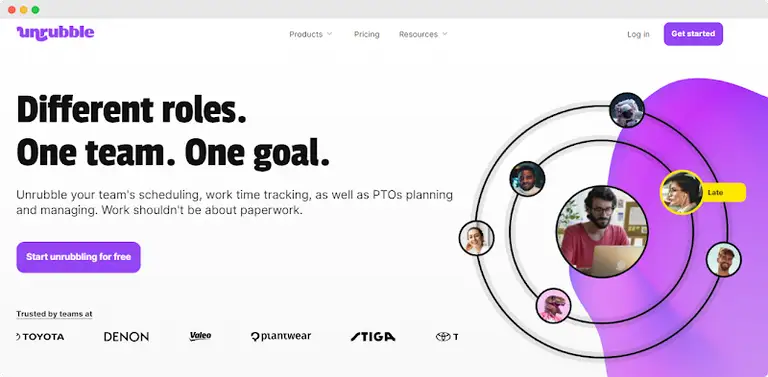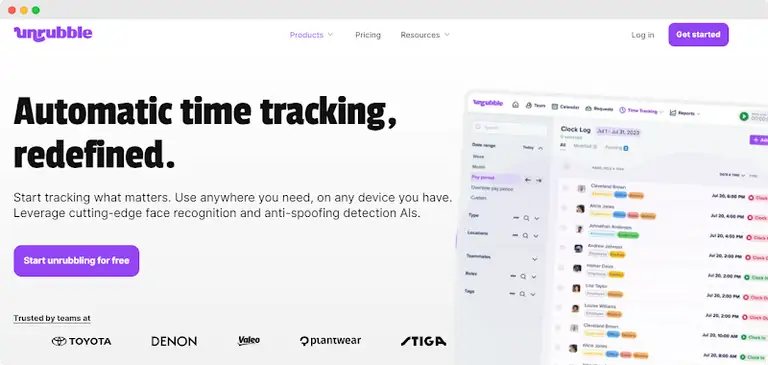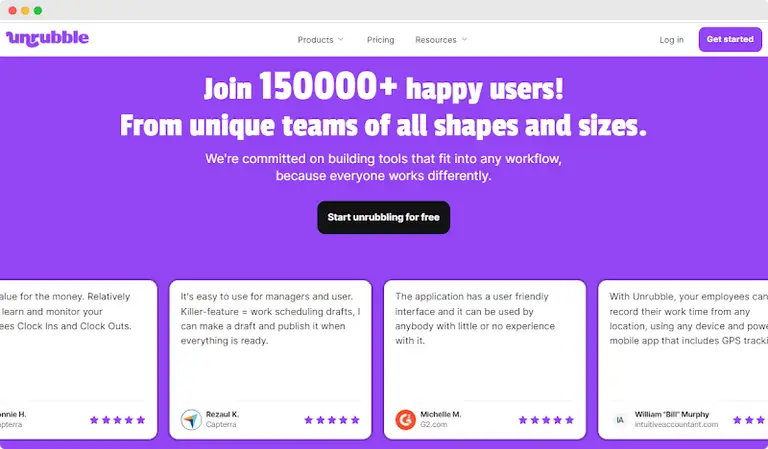Are you playing a never-ending game of 'Where's Waldo?' with your employees?
Let's face it - excessive absenteeism at work is no fun.
In fact, it's frustrating.
But don't worry, we're about to examine the world of workplace hide-and-seek. Let's understand why it happens, and how to tackle it.
Are you ready to roll up your sleeves and get to the bottom of this? Let's go!
What is excessive employee absenteeism in the workplace?

Excessive absenteeism in the company is when an employee is missing from work more than is normal or acceptable. Think of it like skipping school, but for adults.
Now, everyone misses a day of work every now and then. Maybe you're sick, your car broke down, or you have a family emergency. That's normal. But when it starts happening all the time, that's when it turns into absenteeism.
How does it work?
Imagine you're running a team, and one of your key players is always out. It messes up your plans, right? Other team members might have to pick up the slack, and that's not really fair to them.
Plus, if it's a small company, every person counts. So, if someone's always missing, it can really throw a wrench in the works.
In general, absenteeism is a bit of a thorny issue in the workplace. It's about finding that balance between understanding genuine problems and making sure the work still gets done.
What causes excessive absenteeism in the workplace?

Sometimes, there are genuine reasons.
Maybe the person has a chronic illness, or there's a serious issue at home.
But other times, it might be less clear.
It could be they're just not into the job anymore, or maybe there's something going on in the workplace that's making them want to stay away.
Let's read on for more details:
Healthcare issues
First up, healthcare issues. This one's pretty straightforward. If someone's dealing with a chronic illness or has frequent medical appointments, it can lead to a lot of time off work. It's not like they want to be away - they just have to take care of their health.
Dissatisfaction with the job
Then there's dissatisfaction with the job. If someone's just not feeling their job anymore, they might start to skip days. It could be anything from not liking the work, feeling undervalued, or not getting along with a boss or coworker. It's kind of like not wanting to go to a party where you don't like the vibe.
Taking care of family members
Caring for family members is another big cause of absenteeism. This could mean looking after kids, especially if there's a sudden school closure or a childcare hiccup. Or, it might be taking care of an elderly or sick relative. It's tough balancing work and family. And sometimes family has to come first.
Burnout
Burnout's a real thing too. It's like when your phone's battery is always at 1%. You're there, but you're not really functioning at your best. If work's super intense all the time, it can wear people down. As a result, they might need to take a step back.
Lack of work-life balance
A lack of work-life balance ties in with this. Everyone needs time to chill and do their own thing. If work's eating into personal time too much, people might start taking days off just to get a breather.
Stress and conflict in the workplace
Lastly, stress and conflict in the workplace can drive people away. You could compare it to being in a room where there's always tension. What happens? You just don't want to be there. Whether it's stress from the workload or issues with colleagues, it can make the workplace the last place someone wants to be.
What is not considered excessive absenteeism?

So, when we're discussing what's not seen as excessive absenteeism, we're basically talking about the kinds of absences from work that are totally normal and even expected.
Those include:
Planned time off
First up, planned time off. This is like when you book a vacation in advance. You've given your boss a heads-up, everything's scheduled, and it's all good. It's a part of maintaining that work-life balance.
Sick leave
This one's pretty straightforward. If you're unwell, you call in sick and stay home. It's not only good for your own health but also for your colleagues. That's because it prevents the spread of illness, among other things. Most workplaces have a sick leave policy for these scenarios. Remember that taking a day off because you're ill is totally normal.
Jury duty
Jury duty is when you're called to serve as a juror in a court case. It's a legal obligation, so when an employee is called up, they have to go. Employers typically understand this and know that it's not something an employee can control.
Sabbatical leave
Sabbatical leave is a longer break from work, sometimes used for personal growth, travel, or professional development. It's not a sudden absence - it's planned and discussed with your employer. It's seen as a beneficial break that allows employees to recharge and often bring back new perspectives to their jobs.
Bereavement leave
Bereavement leave is taken when an employee lost a loved one. It's a time for mourning and dealing with the emotional and practical aspects of loss. Employers usually have policies for bereavement leave, recognizing the importance of this time for their employees.
Compensatory time off
Often referred to as "comp time," this is time off that an employee earns by they extra hours. Let's say an employee puts in some overtime for a project - you might be given compensatory time off in return. It's a way for employers to acknowledge the extra effort you've put in.
All these types of leave are part of normal work life. They're planned or are for specific, understandable reasons. They show the difference between taking necessary time off and excessive absenteeism, which is more about frequently missing work without a valid reason and often without notice.
Impacts of chronic absenteeism on a business

Not showing up for work can result in quite a few negative outcomes:
Lower productivity
One of the key impacts is lost productivity. When an absent employee regularly misses work, whether it's due to tardiness or unscheduled absences, the work they're supposed to do isn't getting done. This isn't just about someone taking a sick day here and there - it's a consistent pattern that can seriously affect a company's output.
Worsened employee morale
Another consequence is worsened morale of the employees. Other team members might feel the strain as they have to cover for the employee absences. Now it's not just about filling in for a type of absence like a planned vacation or leave under the Medical Leave Act. We can look at it more like it's about regularly having to pick up the slack for someone else's unexcused absences.
Lower revenue
This ongoing issue can lead to lower revenue. It's simple really – less work done often means fewer products made or services provided. The result of this is that the company's bottom line is directly affected.
Increased workload for other employees
A high absenteeism rate leads to an increased workload for other employees. They're already handling their responsibilities and then have to deal with extra tasks, which isn't fair.
Plus, if these absences aren't addressed through disciplinary action, as outlined in an employee handbook, it can create a sense of injustice among staff.
Lower customer satisfaction
Lastly, there's lower customer satisfaction. Customers and clients expect a certain level of service. But with frequent absences, especially without an acceptable excuse, this level of service can drop.
Whether it’s a delayed response to client queries or missed deadlines, it all stems from employee attendance issues.
So, chronic absenteeism isn't just a minor inconvenience. It's a significant issue that can affect many aspects of a business, from productivity and revenue to employee mood and customer satisfaction.
How to prevent excessive absenteeism

Luckily, neither you nor your employees have to go through this.
All you need to know is how to completely eliminate absenteeism:
Review your PTO and employee attendance policy
Start by taking a close look at your Paid Time Off (PTO) and attendance policy. It's key that these policies are clear, fair, and consistently applied. Sometimes, unclear or overly strict policies can inadvertently cause absenteeism.
Make sure your policies are up-to-date and align with industry standards. This clarity helps employees understand what is expected of them.
Have regular employee feedback surveys
Feedback is essential. Regular surveys can help you understand employee concerns and identify potential issues before they lead to absenteeism. These surveys can provide insights into workplace morale, job satisfaction, and potential stressors that might be causing employees to take more time off. Acting on the feedback shows employees that their voices are heard and their well-being matters.
Consider what is job abandonment in your business
It’s definitely worth defining and communicating what constitutes job abandonment. This is typically when an employee is absent without notice for a certain period, and with no intention to return.
Having clear guidelines on what is considered job abandonment helps in taking appropriate actions and also sets clear boundaries for employees.
Review global company absences with a time tracking app
Implementing a time tracking app will give you precious data on employee absences across the company. This technology can help identify patterns or trends in absenteeism, whether in specific departments or company-wide.
Thanks to analyzing this information, you can make informed decisions on how to address the issue. Whether it's through policy changes, additional support for certain teams, or individual interventions.

As you can see, employers usually have policies to handle with somebody who doesn't show up to work. They might check in with the person, see what's up, and try to find a solution. If it's a health issue, maybe they can offer some support or flexibility. But if it's just a case of someone not wanting to be there, that's a tougher nut to crack.
Prevent unexcused absence with Unrubble

Using Unrubble's time tracking features can be a game changer in managing and preventing excessive absenteeism in the workplace.
Let's break down how exactly we can help:
- Unrubble allows for precise tracking of work hours, including overtime and lateness. This kind of detailed tracking helps in identifying patterns of absenteeism. For example, if an employee consistently logs in late, this can be an early indicator of potential excessive absenteeism.
- With real-time tracking and reporting, Unrubble makes it easier to spot unscheduled absences. This allows managers to address these issues promptly before they become a pattern.
- Unrubble's system for managing requests for time off (PTOs), work from home, and business trips, helps make sure that all types of leave are properly recorded and monitored. This is great for differentiating between authorized absences and excessive, unexcused absenteeism.
- The Employee Self-Service App keeps employees informed in real-time about their schedules and work requests. This feature can help reduce misunderstandings about scheduled time off versus unexcused absences.
- The flexibility of accessing the time tracking system via mobile apps lets employees manage their time more effectively in their work environment. They can clock in and out accurately. As such, you get to reduce instances of tardiness or forgotten clock-ins, which can contribute to perceived absenteeism.
Give Unrubble a try and manage excessive absences easily.

Stop unscheduled absence today
Well, that was quite the journey through the maze of excessive absenteeism, wasn't it?
From understanding the 'whys' to exploring the 'hows' of preventing it, we've covered a lot of ground.
Remember, tackling absenteeism is not just about playing detective -it's key to focus on creating an environment where everyone wants to show up.
So, armed with these insights and strategies, you're now ready to turn those empty chairs into a thriving workplace.
And for excellent absence management, remember to try Unrubble.



![What Does PEO Stand For In HR Administration? [2026 Guide]](/static/image?src=https%3A%2F%2Fcdnblog.unrubble.com%2Fpayload-unrubble-images%2FUnrubble-what-does-peo-stand-for-in-hr-administration-180x120.jpg&width=128&height=128&fit=cover&position=center&quality=65&compressionLevel=9&loop=0&delay=100&crop=null&contentType=image%2Fwebp)



